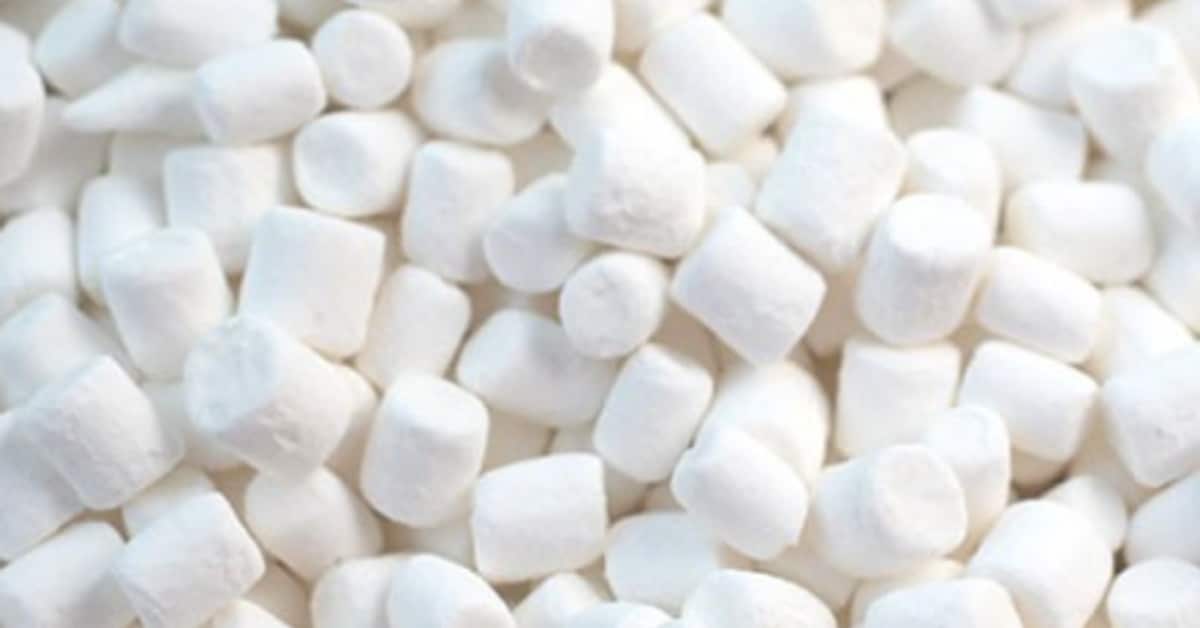White Candy – Delightful List of Classic & Timeless Treats
Are you looking for white candy as you prepare for your themed event? Then you are definitely reading the right article. White, the only color without a tint, is frequently linked to fresh starts, goodness, and enlightenment. It doesn’t matter whether you’re a fan of fluffy marshmallows or sweet nougats, each one of these delicious treats has its own charm.
So grab a piece of your favorite white candy and let’s start our journey!
Please leave a review or any memories of this snack in the comments at the bottom of this page. Thank you!
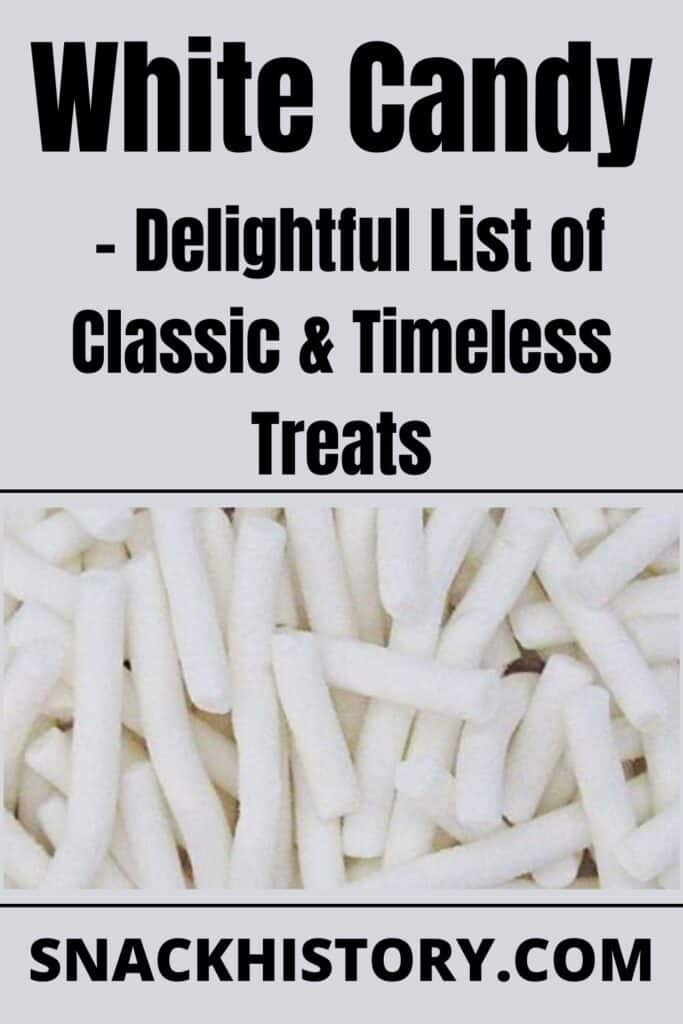
8 Most Popular White Candy
1. Marshmallows
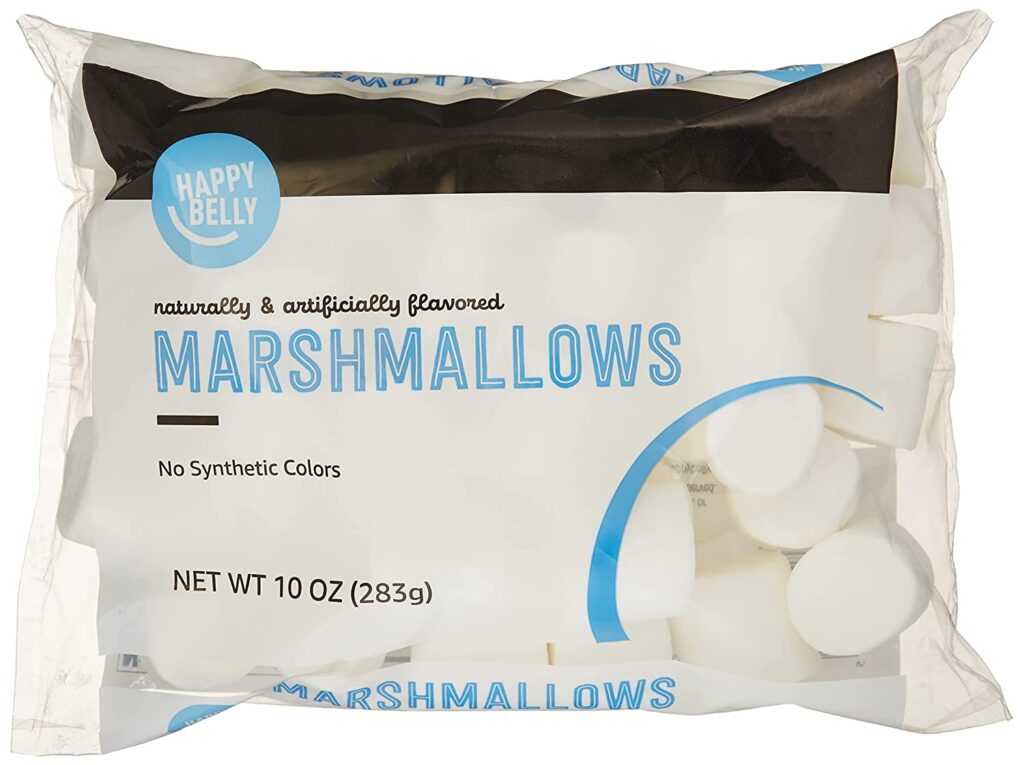
A soft and fluffy sweet delicacy known as a marshmallow has been a favorite for ages. This white candy was first released in France in the 19th century. However, its origins may be found in ancient Egypt.
The marshmallow plant’s sap was utilized by the ancient Egyptians to make a delectable confection that was only offered to royalty and the gods. They utilized marshmallows to cure sore throats and other illnesses because they thought they had therapeutic characteristics.
A drink with added sugar that was well-liked by the nobles was also made from the plant.
François-Antoine Bailly, a French confectioner, created the modern marshmallow candy.
In contrast to the conventional marshmallow sweet manufactured from the marshmallow plant, he produced a fluffy, marshmallow-like confection using egg whites, sugar, and gelatin.
Nowadays, sugar is the primary component of marshmallows.
To make syrup, sugar is boiled with water, corn syrup, and sugar. The liquid is then beaten until it is light and fluffy before adding the gelatin. To make a range of distinct marshmallow flavors and hues, other substances, such as flavorings and colors, can be added. Today, some of the most popular marshmallow brands include Dandies Marshmallows and Peeps Marshmallows.
2. Raffaello
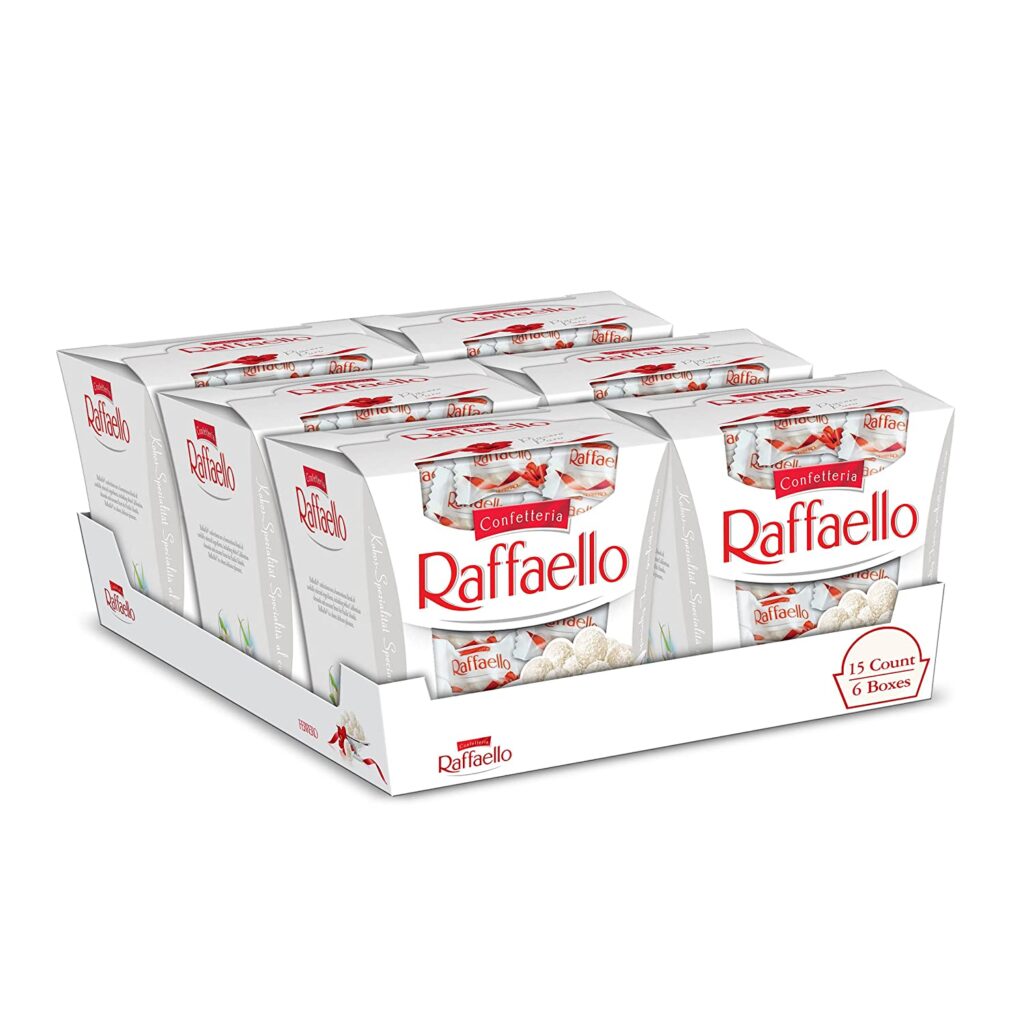
The spherical coconut-almond truffle known as “Raffaello” was introduced to consumers in 1990 by Italian producer Ferrero. With coconut from the Pacific Islands and white almonds from California, the new Raffaello recipe is a perfect fusion of carefully chosen ingredients. “Piacere puro,” or pure pleasure in English, is how Raffaello describes his art.
Toasted hazelnuts and chocolate are enclosed in a delicate wafer shell. Milk chocolate, sugar, cocoa, skim milk, cocoa butter, and vanillin make up the majority of the components.
The two flat wafer sheets with the hemispheres are filled with chocolate and hazelnut cream as well as whole hazelnuts at the start of the manufacturing process. The sweet ball is then made by moving the wafers and clamping them together. The final coating is milk chocolate after the spheres have been covered with chocolate and chopped hazelnuts. The white candy sugar ball is then covered with the noticeable gold foil after the procedure is complete.
3. Tic Tac
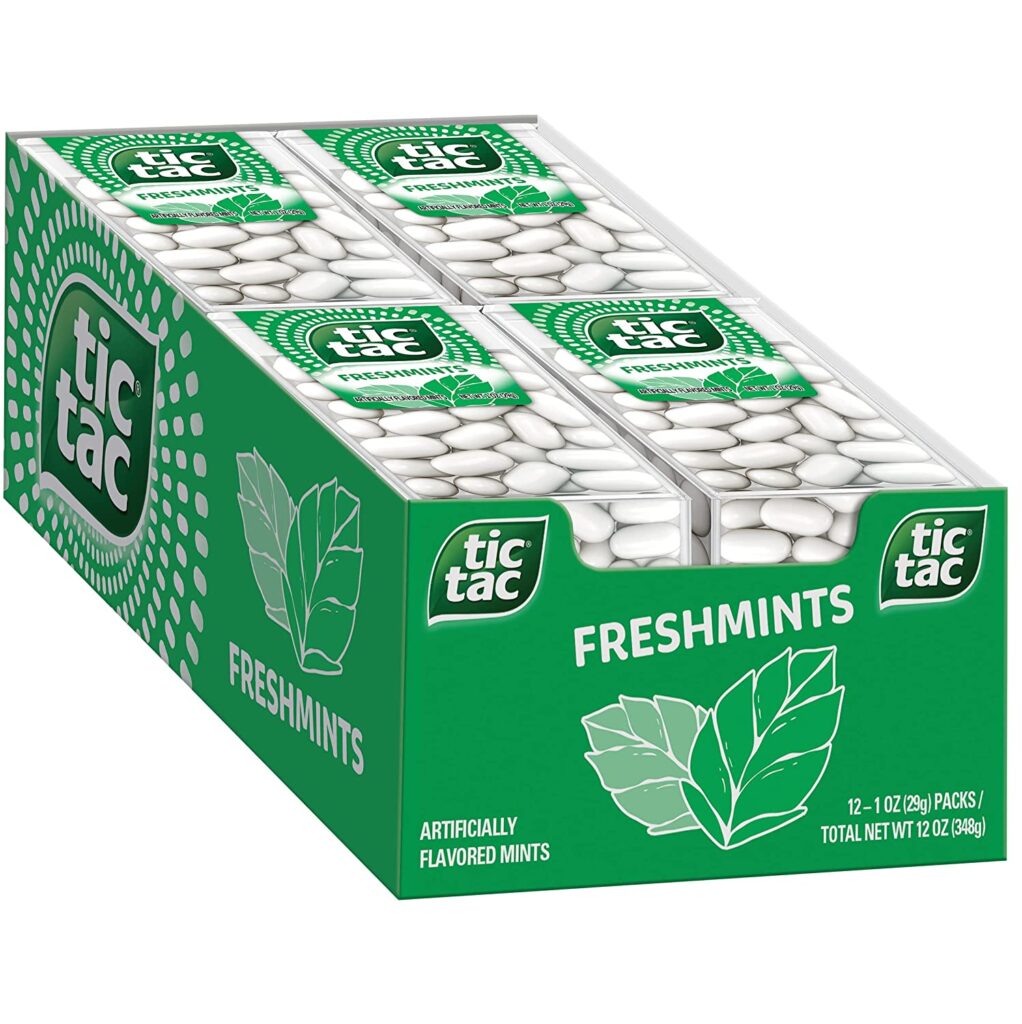
The Italian company Ferrero produces little, hard mints under the brand name Tic Tac. This candy was first produced in 1969 and currently, their distinct flavours are created in hundreds of countries.
Tic Tac is often marketed in little, clear plastic boxes with a top that flips up and shut.
The original Tic Tacs were dyed in specific colors and had distinctive flavors. The low-calorie content of the mints is emphasized in Tic Tac’s advertising. The average flavor has 1.9 calories per mint.
In 1969, this white candy was launched under the moniker “Refreshing Mints.” The name was changed to Tic Tac in 1970 as a result of the unique clicking sound the pack makes when it is opened and closed. A number of other flavors, such as anise and cinnamon, were added in addition to the classic mint and orange flavors.
4. Orbit White
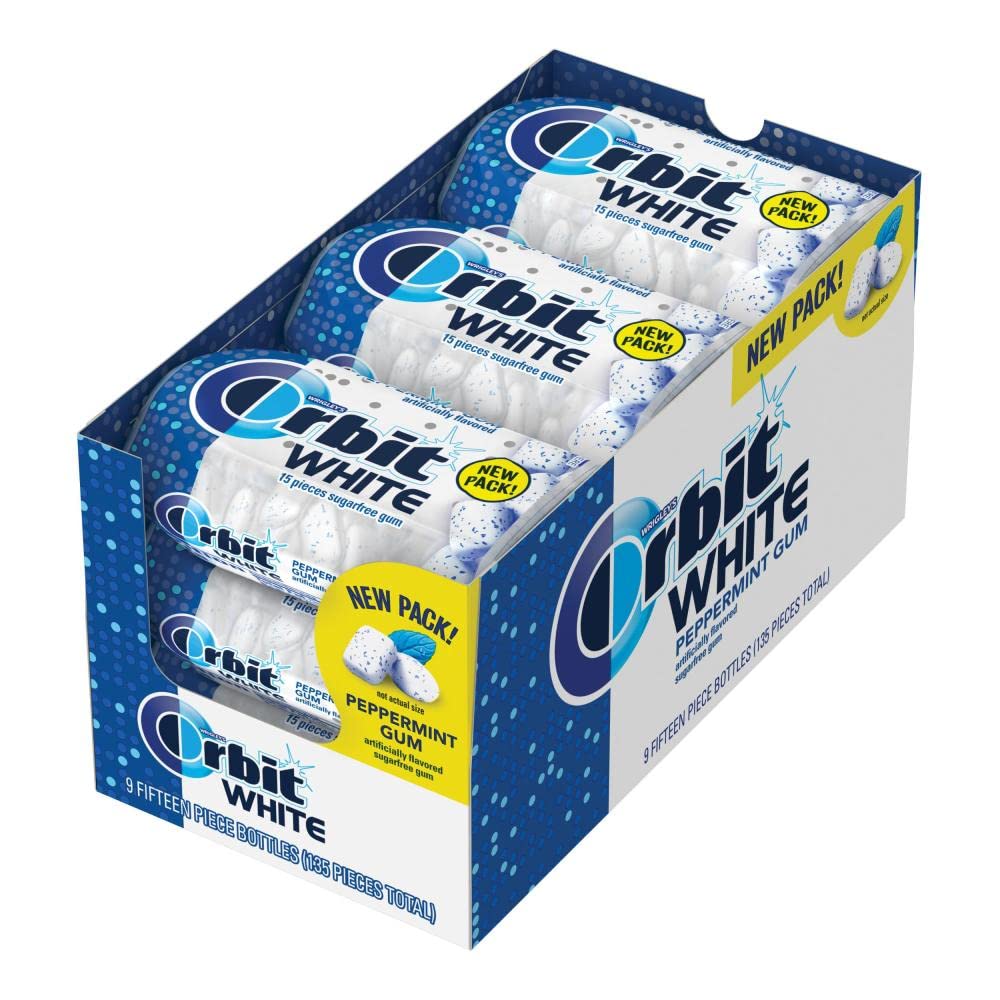
Orbit chewing gum was released in 1899. Due to the rationing of the chemicals used to make gum during World War II, it was introduced in the United States in 1944 as a substitute brand by Wrigley. When Wrigley’s three well-known gum brands, Juicy Fruit, Wrigley’s Spearmint, and Doublemint, returned to the US market after the war, the brand was discontinued.
Thirty years later, in 1976, the gum was revived when it was made available in Germany, Switzerland, and the Netherlands. This was the first time a sugar-free gum bearing the Wrigley name was sold. Other nations, such as Canada, Australia, the UK, Norway, Poland, Israel, and Serbia, eventually adopted the trademark.
This white candy was relaunched in the United States in 2001, and there are 14 individually wrapped pieces in each cardboard box. When it was introduced in the UK in 1899, it was first offered as a typical long-stick gum. Later, the US style took its place. To compete with Trident White gum from Cadbury Adams, Orbit White gum was created in 2001. It comes in blister packs of 20 pieces.
5. Jujube White Nougat Candy
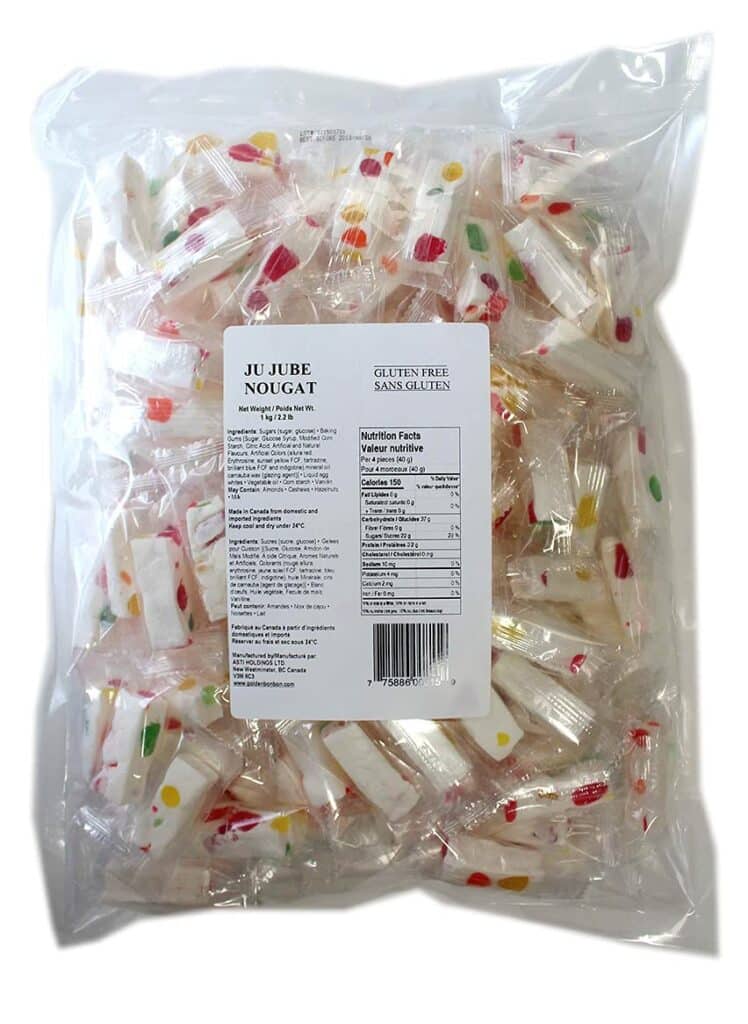
Jujube nougat is another delicious white candy for confectionery lovers. It is a type of traditional candy that has been enjoyed for centuries in many parts of the world. Over time, jujube fruit became a popular ingredient in many sweet and savory dishes, including nougat. Jujube nougat typically consists of a mixture of chopped jujube fruit, honey, nuts, and sometimes other beneficial ingredients like sesame seeds or dried fruit.
The Jujube Nougat candy gets its white color from the nougat. Nougat is a sweet prepared with sugar or honey, roasted nuts (the most popular types are almonds, walnuts, pistachios, hazelnuts, and macadamia nuts), beaten egg whites, and occasionally chopped candied fruit. Chocolate bars and other confections frequently contain nougat, which has a chewy consistency.
There are two fundamental types of nougat. The first and most popular type is white nougat, also known as Persian nougat, which is produced from beaten egg whites and honey and initially came to Spain with the arrival of Arabs in the early 7th century. The second is brown nougat, which is created without egg whites and has a harder, frequently gritty texture. Brown nougat is also known as nougat noir in French and croccante in Italian.
6. Lindt White Chocolate
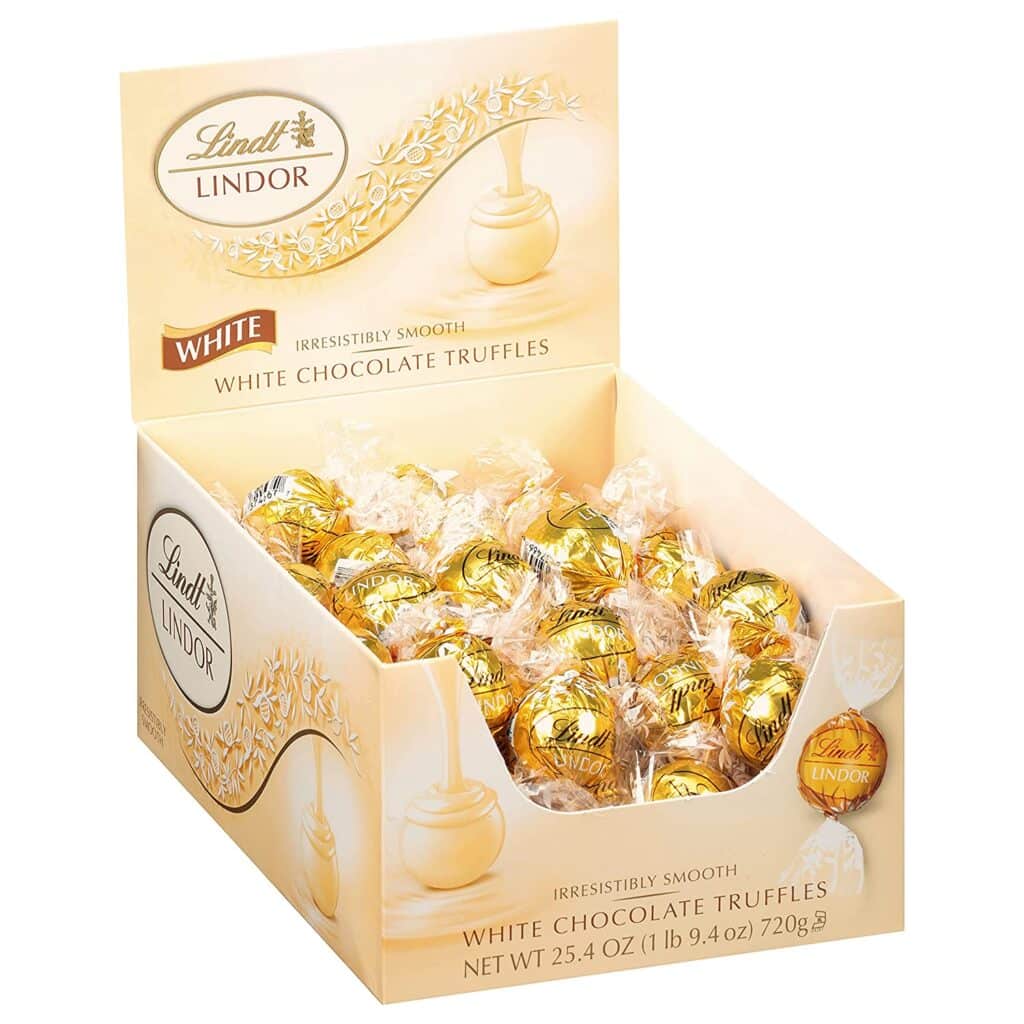
Since more than 150 years ago, the Swiss chocolate company Lindt has been producing delectable sweets. You will soon recall the distinctive flavors of Lindt Dark Chocolate or their Lindor truffles if you have ever had them. You’re compelled to fall in love with them. In such a very competitive sector, their flavor and quality have allowed them to survive this long. White candy from Lindt is among its greatest offerings.
Since there are no cocoa granules in it, it isn’t even chocolate. Basically, cocoa butter and sugar are combined, and sometimes a dash of vanilla is added for taste.
A unique feature of Lindt’s white chocolate is its smoothness, which is a result of the company’s conching process. This process involves grinding the chocolate for an extended period to create a smooth and silky texture. Lindt’s white chocolate is available in various forms, including bars, truffles, and even hot chocolate mixes.
7. Cotton Candy
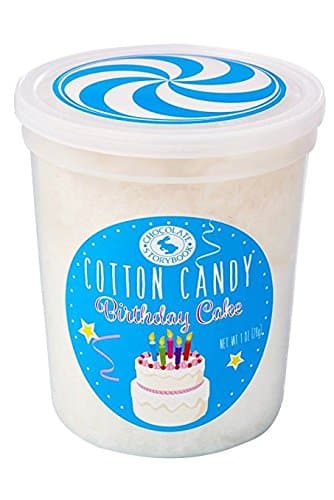
Cotton candy is one of the first sweets that come to mind when thinking about white candy. There are a few different theories as to how cotton candy came to be, but the most well-known and intriguing one claims that the first electric cotton candy machine was made in 1897 by two candy makers: dentist William Morrison and confectioner John C. Wharton.
It’s interesting to note that cotton candy was first called “fairy floss,” but over time, different individuals have given it other names. In Britain, it is known as “candy floss.” In Australia and Finland, it is still known as “fairy floss.” In the Netherlands, it is known as “sugar spider,” while in France, it is known as “Papa’s beard.” It resembles a Chinese confection known as “dragon’s beard,” which is created from cotton candy. Although this cloud-like confection has several names, cotton candy is by far the most popular.
Sugar is the sole primary component of cotton candy. Yes, it might be an issue for your dentist, therefore, if you enjoy cotton candy, it is advised to examine your teeth frequently.
8. Jelly Belly Coconut
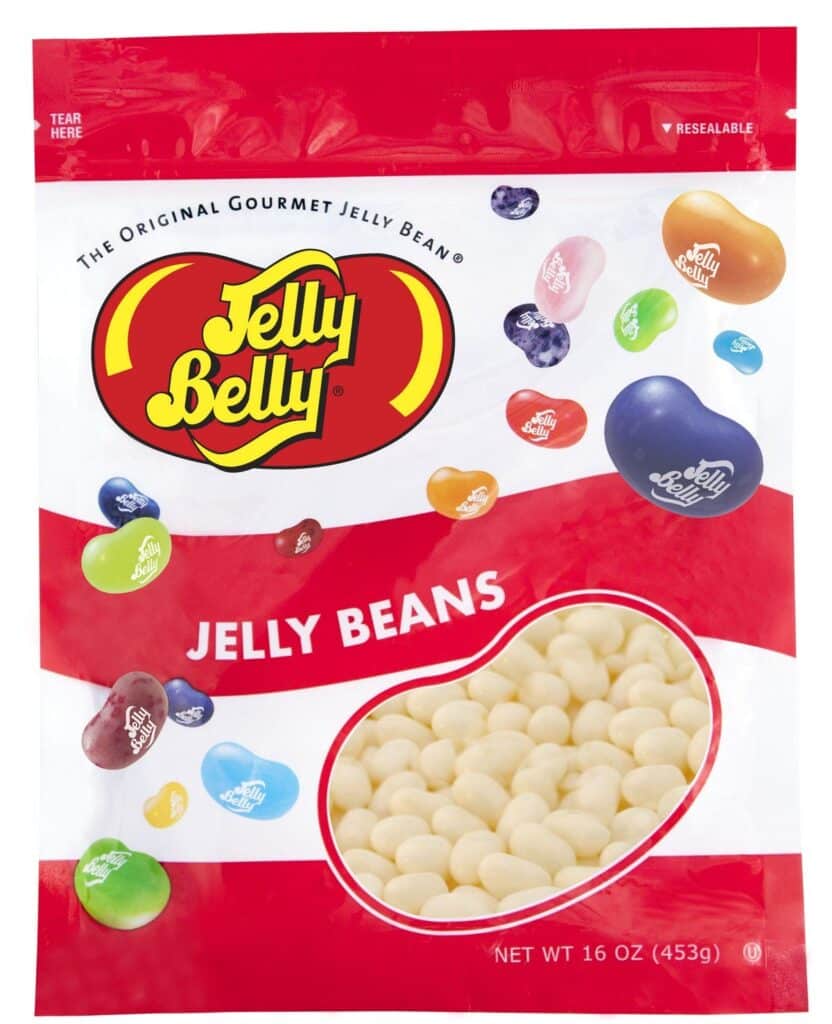
In order to produce a jelly bean utilizing natural purees, Herman Rowland, president of Herman Goelitz, and candy and nut wholesaler David Klein teamed up in 1976. For the jelly beans, David Klein contracted with the Goelitz business. The Jelly Belly jelly bean was developed using the Mini Jelly Bean idea.
Jelly Belly’s coconut jelly beans are made with real coconut flakes, which give them a delicious and authentic taste. This white candy is available in various packages, including individual bags, gift boxes, and bulk options.
Its commitment to quality ingredients and unique flavor combinations has made it a beloved brand among candy lovers worldwide. Overall, Jelly Belly’s coconut jelly beans are a delicious and satisfying treat that is perfect for curing any sweet tooth.
Bottom Line
All in all, white candy is more than simply a sweet delicacy – it’s a cherished tradition that has endured. There’s something about white candy that draws us in, whether we enjoy the cooling flavor of peppermint candies, chewing gum, or the creamy smoothness of white chocolate. After reviewing some of the most delicious sweets, there is no doubt that white candy makes our lives a little bit happier and more comfortable.

Nato is a content writer and researcher with a background in psychology. She’s passionate about writing about the candy industry and exploring the cultural significance of sweets and treats. She believes that the stories behind our favorite snacks can reveal a great deal about our values.
Please leave a review or any memories of this snack in the comments below. Thank you!
Click here for a full A-Z list of Snacks and Candy
